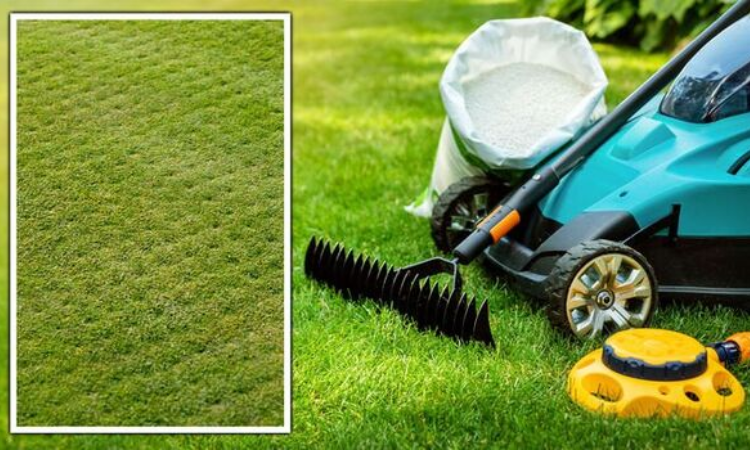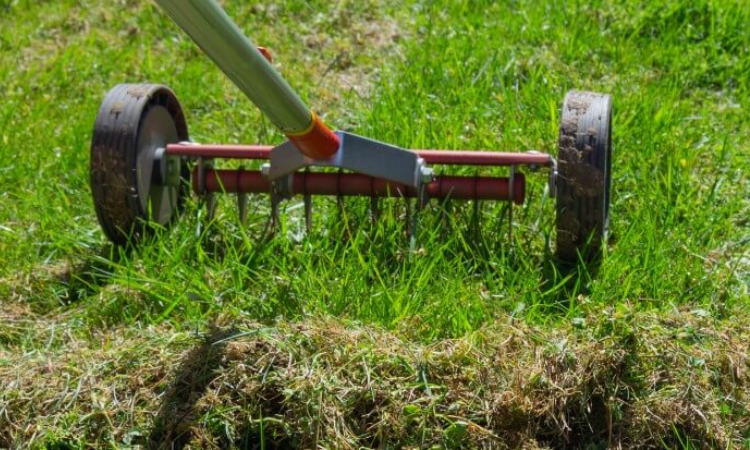When is the Best Time to Scarify Your Lawn?: Hello, fellow grass enthusiasts! If you’ve ever wanted to know when it’s ideal to give your grass a revitalizing boost, you’ve come to the right place. In this manual, we’ll discuss scarifying, the industry’s best-kept secret for producing a thick, healthy turf. Grab your rake and let’s uncover the secrets of when to scarify your lawn!
The Necessity of Learning Lawn Scarification Basics
An Explanation of Scarification
First, we’ll discuss what scarification is and how it works. Think of it as a day at the spa for your grass. Scarification is the process of meticulously raking the surface to get rid of moss, thatch, and other stuff that limits the growth of your grass. It’s like giving your grass a fresh life and seeing it flourish.
The Importance of Thatch Maintenance
Thatch, a spongy layer of dead grass and roots, can be damaging to a well-kept lawn, despite its seemingly harmless appearance. Scarification is used to get rid of this suffocating layer, which then lets water, air, and nutrients back into the soil. You can think of it as making more room for your grass to grow in.
Seasonal Acuity: When to Insect Your Yard
Spring’s Return
It’s generally known that spring is the best time for scarification. Your lawn has emerged from its winter dormancy and is ready for some loving care. The optimal conditions for rapid grass growth occur in late spring when the soil is neither too wet nor too dry. It’s like getting your grass started on its summer fitness regimen.
Autumnal Revitalization
Scarifying your grass in the fall is another fantastic way to improve its appearance. Your lawn will be in better shape for the winter if you remove moss and thatch as the growth season winds down. Choose a sunny, dry day in early fall and imagine this as a spa treatment for your grass before the cold weather sets in.
Evaluation of Grass Condition Before Scarification
Assessing the Density of the Grass Cover
First, measure the thickness of the thatch layer so you know how deep to scarify the grass. If your grass is taller than half an inch, it is sending out a terrible rescue operation SOS. It’s like deciding if you need a haircut, in which case you trim the top to promote a stronger bottom.
Evaluation of Soil Moisture
The level of moisture in the soil is crucial in determining when to plant. If you want to know if the dirt is easily crumbled, just give it a little press. If that’s the case, then you may consider it done. Scarifying your lawn when the earth is somewhat damp can produce better results and be more comfortable for you. It’s comparable to understanding when your skin is ready to absorb the advantages of a spa treatment.
Lawn Scarification Techniques for Upkeep
Scarification Depth Adjustment
Lawns and scarifiers are not constructed from the same elements. Scarifier depth should be adjusted according to lawn needs. Shallow settings are suitable for little thatch, while deeper levels provide a deeper clean for more serious problems. It’s like customizing the pressure of a massage for your grass.
The Two-Way Street Principle
Use the two-way scarifying rule for optimal results. Scarify in both a north-to-south and an east-to-west orientation. This crosshatch pattern ensures uniform grass growth and comprehensive coverage. Think of it as giving your grass a multi-pronged massage to help it unwind and feel its best.
Aftercare for Scarification
Cleaning Up the Mess
After the scarification procedure is done, don’t let your lawn get dirty. Give your grass some breathing room by removing any moss or thatch that may have accumulated there. It’s like putting the finishing touches on a spa day by tidying up the lawn and creating new growth space.
Feeding and Watering
Adding nutrients to your lawn following scarification is ideal. To encourage new growth and replenish nutrients, use a balanced fertilizer. You may help your lawn heal by giving it a good soaking. It’s like treating your grass to a spa treatment, and then feeding it a hearty meal to help it heal.
Monitoring the expansion and healing of grass areas
The Value of Being Patient
After the scarification, you’ll need to be patient. Your grass may look a little disheveled at first, but that’s quite normal while it recovers. Like a fresh haircut, your lawn needs time to settle into its new shape after being trimmed.
Recognizing a Breakthrough
As the weeks go by, you should rejoice at the sight of new, vibrant grass growth. Those tender new shoots are the result of a successful scarification session. Like a plant’s first flowers after years of nurturing, a well-kept lawn is a visible manifestation of your dedication.

Considerations for Seasonal Scarification
Advantages of Scarification in the Spring
You can immediately benefit from a springtime scarification. Your grass will be more suited to take up nutrients, water, and sunlight. Think of it as a spring cleaning for your lawn, a fresh start for the warmer months ahead.
Scarification in the Autumn to Prepare for Winter
Scarification in the fall strengthens the immune system in time for the cold season. Getting rid of thatch and moss before winter hits will make your lawn more resistant to the elements. Layering your grass up for the winter is the equivalent of preparing yourself for the cold.
Scarification that fits your needs Continuity
Lawns with persistent thatch or moss issues may benefit from an annual scarification program. Think of it as an intensive care plan for your grass that you get once a year at the spa.
As Needed Scarification
If your grass is in generally good shape, scarification as needed may be all that’s necessary. Check the thatch level and overall condition of the grass regularly. When your grass is begging for a day at the spa, scarify. It’s like mastering the language of your body.
Environmental Impacts of Scarification
Methods for Caring for a Lawn in a Sustainable Way
Scarification can help motivate people to adopt more sustainable lawn care practices. Scarification is congruent with the ideals of green gardening because it increases grass health and minimizes chemical interventions. It’s not dissimilar from picking out eco-friendly cosmetics when caring for your skin.
Scarification and Water Conservation
Scarification makes grass stronger and more drought-resistant. This water-saving innovation complements sustainable lawn care practices. You might think of scarification as a facelift for your grass; it will help it absorb and retain more water, making it healthier in the long run.
Conclusion
Congratulations! You now know how to scarify your grass for the best effect at the appropriate moment! Your grass will benefit from a refreshing treatment in either the fall or spring. Keeping track of your lawn’s healing, recognizing new growth, and tailoring your scarification schedule are all signs that you care about the yard as a whole, not just its appearance. So, keep the scarifiers handy, pay attention to what your grass needs, and let the scarification sessions continue improving your green space. I hope you had a good scare!
I hope you like the part where we talked about When is the Best Time to Scarify Your Lawn. For more content like this, visit our website VariegatedPlantz.com.

